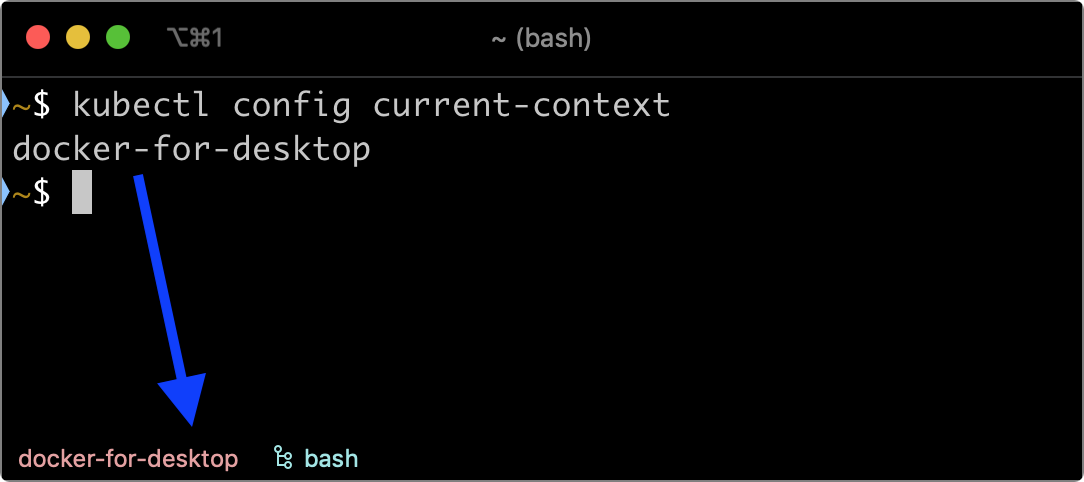iTermKube
Kubernetes Context in iTerm2's Status Bar
This project is maintained by siggy
Kubernetes Context in iTerm2’s Status Bar
This guide demonstrates displaying the current Kubernetes context in iTerm2’s Status Bar.
Note: This requires iTerm2 3.3+.

Install iTerm2 Shell Integration
iTerm2 > Install Shell Integration
This will add a line to your .bash_profile:
test -e "${HOME}/.iterm2_shell_integration.bash" && source "${HOME}/.iterm2_shell_integration.bash"
Add the kubecontext user variable
Before .iterm2_shell_integration.bash is loaded, add this function:
function iterm2_print_user_vars() {
iterm2_set_user_var kubecontext $(kubectl config current-context)
}
The above command can be slow if the internet connection is slow. An alternative is to use this function:
function iterm2_print_user_vars() {
iterm2_set_user_var kubecontext $(awk '/^current-context:/{print $2;exit;}' <~/.kube/config)
}
If you want to display the current namespace in your Status Bar as well, add this function instead:
function iterm2_print_user_vars() {
iterm2_set_user_var kubecontext $(kubectl config current-context):$(kubectl config view --minify --output 'jsonpath={..namespace}')
}
Add kubecontext Status Bar component
iTerm2>Preferences>Profiles>Session>Configure Status Bar- Drag a new
Interpolated Stringcomponent toActive Components. - Select the new component and click
Configure Component. - Set
String Valueto\(user.kubecontext)